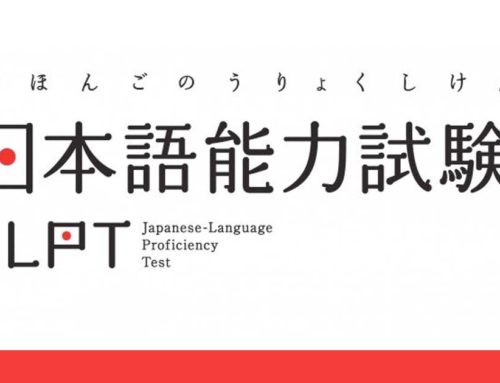If you’re a non-native living in Japan, sooner or later, you’re going to want to learn some Japanese.
But, how do you start?
Today, we’re going to give you some tips on just how to do that.
Is Japanese difficult to learn?
I once heard a Japanese person say, “Japanese is the most difficult language in the world.” For some reason, I felt proud of that, but I also wondered, “Where is the evidence for that?” Which is when I found the Language Difficulty Ranking.
According to the ranking, Japanese is in category 5 (category 1 being the easiest, and 5 the hardest), and Arabic, Chinese, and Korean are in the same category. There is even an asterisk (*) on the Japanese language, meaning that it is considered more difficult than other languages in its category.
Based on this data, we could go as far as to say that Japanese is the most difficult language in the world.
So, what do non-natives find difficult about the Japanese language? In my field of work, I meet a lot of foreign nationals, so I would like to share with you my first-hand experience.
Word order
Many people from abroad seem to find it difficult to learn Japanese with the subject first and the predicate last.
People also find it difficult to get their head around the fact that modifiers come before nouns. In English, one might say “Mr. Yamada ate the sandwich”, whereas in Japanese it is “Mr. Yamada, the sandwich, ate.”
It takes time to switch that mentality that has been so ingrained into our minds.
Difficult to read and write
I often hear people say that they’re OK with speaking and listening, but that reading and writing are difficult. Especially for those who don’t live in a country with Kanji-like characters, they say that it’s like torture because they have to learn Kanji from scratch.
Then, is it easy for people from countries with thos characters to learn Kanji? Even if you know the meaning, you still have to memorize the correct reading, which some people say is like a punishment, if not torture.
For example, there are many ways to read the Chinese character for “生”, such as “sei”, “sho”, “i”, “nama”, “ha”, “u”, “ubu”, and “ki”. Whenever I tell this story, students frown and hold their heads in their hands.
“Onomatopoeic” words
Onomatopoeic words such as “zaa-zaa,” “paku-paku,” “scene,” “kirikiri,” and “zuki-zuki,” which are commonly used by Japanese people, are another area of difficulty.
“Fuwa-fuwa” conjures up images of softness and lightness in most Japanese, but this is not a natural assumption for those from abroad. Many Japanese people take this for granted, and can guess what an onomatopoeia means, even if you make one up. But this is because they have grown up with it, whereas non-natives might use entirely different words that Japanese people can’t recognise, such as “splash” and “crash”.

Dialects
I’ve also often heard that “Textbook Japanese and the Japanese I hear at my part-time job are completely different!” This is particularly a concern in areas outside of Tokyo, where not only is the language different, but the accent too!
Those who have learned to listen to the end of a sentence to understand whether it is positive or negative get confused when the sentence ends with “~yan” or “~ken”. And when the verbs (such as “utsuru” becomes “utsusu” or “ucharu”) are completely different, they feel like they can’t handle it anymore! For this, it’s often simply a question of immersing yourself in the local language, and being an active learner.
Once they embrace the local language, I’ve heard a lot of people say they love dialects, and become more fond of their local one.
Honorifics
On a superficial level, it’s already difficult to learn Japanese honorifics because you need to learn the humble and honorific forms, but even if you get used to it, it’s hard to choose the right honorific depending on who you are speaking to!
This is actually difficult even for Japanese people, but it is said that “a person who can use keigo correctly is a member of society”, so a lot of non-Japanese who want to work in Japan are under a lot of pressure to use keigo.

How to self-study to improve your Japanese
It’s easy to say “I want to learn Japanese”, and open up the first textbook you find online, but the key to studying efficiently is to clarify the purpose of what you want to be able to do with your Japanese. Do you want to go to university, do you want to use it for work, or do you just want to use it for daily life?
If you want to use it for work, you need to know the technical terms used in the industry, and you also need to consider whether you want to improve your Japanese for internal use first, or whether you’ll have a lot of opportunities to talk with people outside of the company.
If you are aiming to go to university, it is important to know the vocabulary that will appear on the exams and to study grammar thoroughly. In addition, it is also necessary to study reading and writing skills for classes after entering university, as well as for study abroad exams.
If you want to use it for daily life, there are even different situations within that. Do you want to be able to read signs, converse with locals, or just know the basics for getting around the town?
Pinpoint your needs, and you’ll learn much quicker.
Japanese teaching materials
There are many teaching materials available online, so that’s the easiest place to start. In particular, the Japan Foundation’s website has some good Japanese language materials.
For those who prefer to study with books, there are bookstores specializing in Japanese language materials (Bonjinsha, Otani Shoten, Sogakusha, Nihongo Books), and we recommend visiting them or checking them out online.
However, I have heard some people say, “It’s kind of hard to get used to study materials because they seem dry.” In which case, one way to study is to combine it with your own hobbies and interests.
Learn about Japan’s history
Learning about Japanese history at the same time has benefits that go beyond improving your Japanese.
Knowing the history leads to a deeper understanding of the people born and raised in the country. For Japanese people, foreigners who are well versed in the history of Japan will undoubtedly leave a good impression of them, which is great for starting a conversation.
There are many history-related manga and history books for children, so why not give it a try? You can kill two birds with one stone by learning both history and Japanese.
There may be people who are interested in Japanese history and have studied it to some extent before coming to Japan. If you study it in your native language and then learn what you know then again in Japanese, you can satisfy your intellectual curiosity.

Learn through movies, anime, and games
If you came to Japan because you like Japanese movies, anime, or games, you can use that interest to improve your Japanese. You can watch or read as much as you like, and you can often learn from conversations in online games.
However, some phrases used in anime and games may be rude or odd to use in normal conversation. If the expression on the other person’s face changes after using the word, ask, “Is this usage strange?” This is a great opportunity to start a conversation and increase your Japanese abilities, too.
It is important to experience and use Japanese in order to improve, so make the most of movies, anime, and games in order to increase the time you spend in Japanese rather than your native language.
Learning through Japanese food culture
It is quite common for people to decide to come to Japan because of the Japanese food they encountered in their home country. Needless to say, food is a topic of interest regardless of country.
These days, you can learn how to make Japanese food on YouTube. Of course, you can learn a lot by listening to the Japanese videos, and you can also increase your vocabulary of food from the names of ingredients that appear in the videos.
After you come to Japan, you may want to introduce such YouTube sites to Japanese people. Japanese people don’t often watch YouTube videos that introduce how to make Japanese food, so I’m sure they will find it interesting. If you can talk about how you actually made it, it will be even more exciting.
Learn Japanese through Japanese songs
One way to learn Japanese is through songs. The words in the lyrics are sometimes difficult to understand, but it is also fun to look them up. Sometimes you may not understand what the song is trying to say, but you don’t have to worry about that because you can just enjoy the song, regardless.
Have fun singing along, and sometimes you might be praised for your Japanese knowledge. Before you know it, you’ll feel comfortable speaking in Japanese, too! Singing is a good way to get both input (listening) and output (singing).
It is also good to use songs as listening practice materials. You can find the lyrics by searching online, but before you do that, try some active practice by listening a few times and trying to write down the lyrics. As you repeat the process, you will find out what sounds you tend to miss.

Make friends!
Spending time with Japanese friends and acquaintances is hands down the best way to learn. You can learn how to say things differently depending on the level of intimacy in the relationship, and how to choose your words depending on how you feel at the time.
For example, when you want to ask for something, if the person you are asking is an older person or your boss, you will need to be polite and considerate of their situation, while if it is a friend, you might be more direct.
With friends, even when you decline an invitation, the way you say it will be different if you’re sure you want to go next time or if you’re sure you won’t next time. The best way to learn how to say things is through real life situations.
Japanese people tend to be reserved in the beginning, but once you get to know them, they will correct your mistakes and help you learn, especially if they know that’s what you want. This is one of the best ways to learn.
Another good thing about learning Japanese through relationships is that you will naturally learn the gestures that accompany the words, too. It goes without saying that in order for a foreigner to acquire Japanese that can be understood correctly, it is better to be able to naturally produce these non-verbal aspects as well.
Japanese words people often get wrong
The main problem is the “katakana” language, where people think they know what they are talking about, but in fact they do not!
Let’s look at some vocabulary from the book “Katakana Vocabulary Training by Field” published by Three A Network.
Stock, sensor, outlet, living, safe, pinch….
These are words that are listed in textbook vocabulary lists. A lot of Japanese natives might expect everyone to understand these words without explanation, but in fact, they are loan words with quite a different meaning in Japanese. For example “セーフ” is often used on its own to mean “phew” or “that was close!” But is not something one might use in English. “Safe!”… Nah, not quite right.
Other words that even have the same meaning might be completely confusing to a new learner of Japanese. “テーブル” doesn’t sound much like “table”, really. It takes some getting used to!
Conquer these problems with F2L!
At F2L academy, we have a team of highly experienced Japanese language instructors.
All of the problems we’ve covered here are what our tutors will help you with in class. After all, the best way to learn Japanese is from a Japanese person themselves!
You can take private lessons to get one-to-one tutoring, or join group lessons to make friends and learn together.
Take a class at F2L Academy and improve your Japanese! https://toranomon-ls.com/level-check/







Leave A Comment